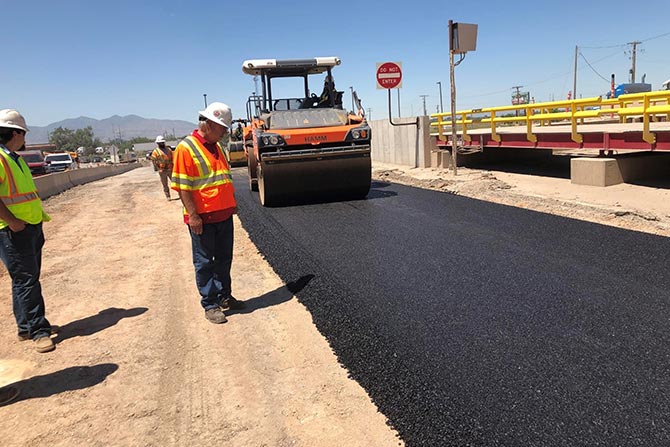This summer has already been hot, and the heat is here to stay for the foreseeable future. This summer in Utah brought above-average temperatures, with little rain for relief. It’s safe to say we are in the dog days of summer.
As temperatures rise, proactively addressing the working conditions of your employees is vital. The extreme heat can take a toll on workers. The risk of them developing dangerous heat-related conditions is all too real. Dehydration, heat exhaustion, heat stress, heat stroke and other hazards are serious yet preventable medical conditions.
According to OSHA, thousands of workers become sick from heat exposure every year, with a number having fatal results. Nearly three out of four workers who die from heat exposure are in their first week of work. These employees have not had time to adjust to working in the heat, and that is an avoidable tragedy.
That raises the question, what can you, as an employer, do to help prevent heat-related illness among the workforce? Under federal law, OSHA states that employers always have a duty to keep their workplace free of known hazards. “This includes protecting workers from heat-related hazards,” according to the OSHA website. This standard applies to both outdoor and indoor work.
While some states have specific laws governing occupational heat exposure, Utah has adopted most federal OSHA standards and incorporates them by reference. Although OSHA does not have a specific standard that addresses employee exposure to extreme heat, the agency does urge employers to take steps to prevent heat-related illnesses.
Here are some things employers should do to protect their employees from heat stress:
- Regulate the temperature. If you are working in an indoor workspace, cool the air with fans, install shielding and ensure that there is proper ventilation by insulating the workplace and using air conditioning.
- Train and educate your employees on heat stress. Show your employees how to avoid heat stress and educate them on the dangers of consuming alcohol and drugs (even over-the-counter medications), as substances can make it more difficult to recognize the signs of heat-related illnesses.
- Make water easily accessible. OSHA recommends that workers, even if they are not thirsty, drink at least one cup of water every 20 minutes.
- Encourage employees to dress for the heat. This means wearing a hat and light-colored, loose-fitting clothing.
- Have a heat illness prevention plan. The plan should outline procedures, supplies and equipment necessary to prevent workers from getting a heat-related illness, as well as an emergency action plan if a worker shows signs of distress. Make sure you share this information with your employees often.
- Monitor employees for signs and symptoms of heat illness. Symptoms may include dizziness, fainting, nausea and muscle spasms. Also, conduct frequent verbal checks with workers who are wearing face coverings or wearing face equipment like a respirator. Managers should encourage employees to do the same for themselves and their coworkers. Should any concerning signs appear, try to cool the worker down and “when in doubt, call 911,” as OSHA recommends.
- Allow employees regular rest breaks. Make sure there is a shady or cool area for them to rest in.
- Give employees time to acclimate. OSHA recommends the so-called “20% rule.” “On the first day, don’t allow employees to work more than 20% of a shift at full intensity in the heat. Increase their time by no more than 20% a day until they are used to working in the heat.” OSHA notes that in a worker’s first few days, “absolutely all symptoms should be taken seriously,” and workers should be allowed to stop working and get an evaluation to see if they’ve developed a heat-related illness.
- Change work hours. Another OSHA-recommended accommodation employers can make when feasible is to change employees’ working hours so that they work primarily during the coolest parts of the day — such as early morning or after the sun goes down.
Aside from the previously mentioned tragedies that can occur from heat illness, OSHA inspectors conduct heat inspections and issue General Duty Clause citations when heat hazards are present, so it’s best to be proactive. At a minimum, employers should take basic preventative measures.
Here are a few useful tools to help protect your employees from heat-related illnesses.
Heat Stress Calculator
Quickly determine whether a worker’s heat stress is above the recommended limits by clicking the link.
https://www.osha.gov/heat-exposure/calculator
OSHA-NIOSH Heat Safety Tool App
Download the app for real-time heat index and hourly forecasts specific to your location. Occupational safety and health recommendations from OSHA and NIOSH are also included. Scan the QR code to access this handy tool.
https://www.cdc.gov/niosh/topics/heatstress/heatapp.html








